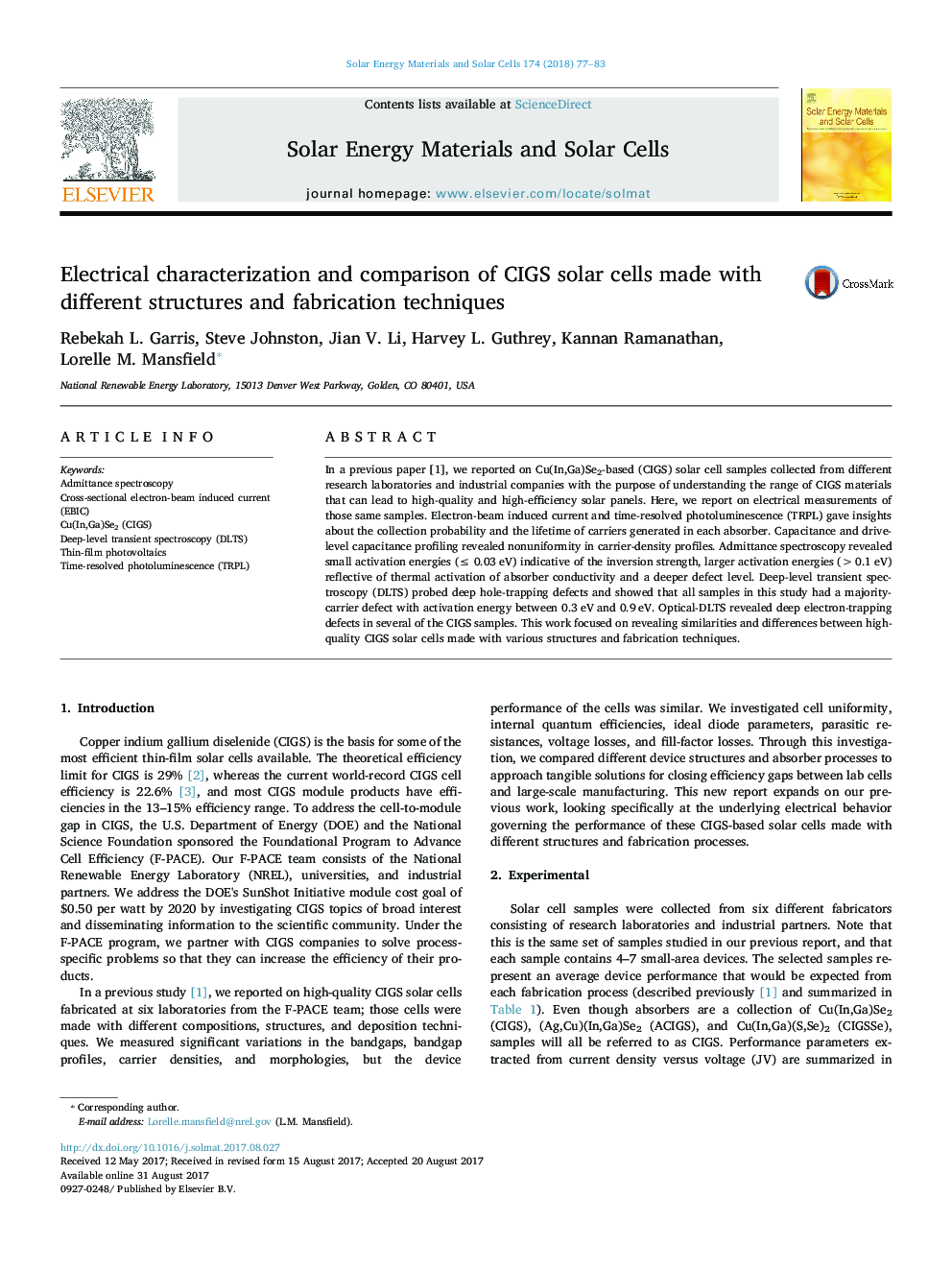| Article ID | Journal | Published Year | Pages | File Type |
|---|---|---|---|---|
| 6456629 | Solar Energy Materials and Solar Cells | 2018 | 7 Pages |
â¢Electrical characterization of CIGS-based solar cells from six different fabricators.â¢The EBIC collection profiles were affected by the substrate and deposition process.â¢DLTS measurements showed that all samples have a deep hole trap between ~ 0.5 eV and 0.9 eV.
In a previous paper [1], we reported on Cu(In,Ga)Se2-based (CIGS) solar cell samples collected from different research laboratories and industrial companies with the purpose of understanding the range of CIGS materials that can lead to high-quality and high-efficiency solar panels. Here, we report on electrical measurements of those same samples. Electron-beam induced current and time-resolved photoluminescence (TRPL) gave insights about the collection probability and the lifetime of carriers generated in each absorber. Capacitance and drive-level capacitance profiling revealed nonuniformity in carrier-density profiles. Admittance spectroscopy revealed small activation energies (⤠0.03 eV) indicative of the inversion strength, larger activation energies (> 0.1 eV) reflective of thermal activation of absorber conductivity and a deeper defect level. Deep-level transient spectroscopy (DLTS) probed deep hole-trapping defects and showed that all samples in this study had a majority-carrier defect with activation energy between 0.3 eV and 0.9 eV. Optical-DLTS revealed deep electron-trapping defects in several of the CIGS samples. This work focused on revealing similarities and differences between high-quality CIGS solar cells made with various structures and fabrication techniques.
